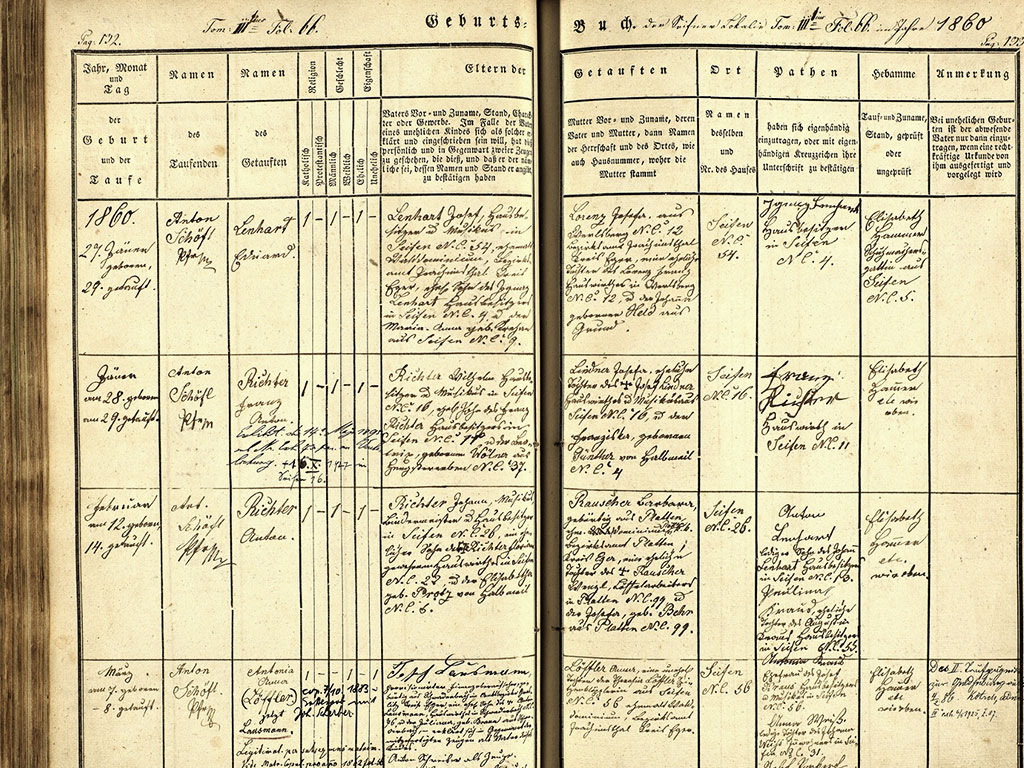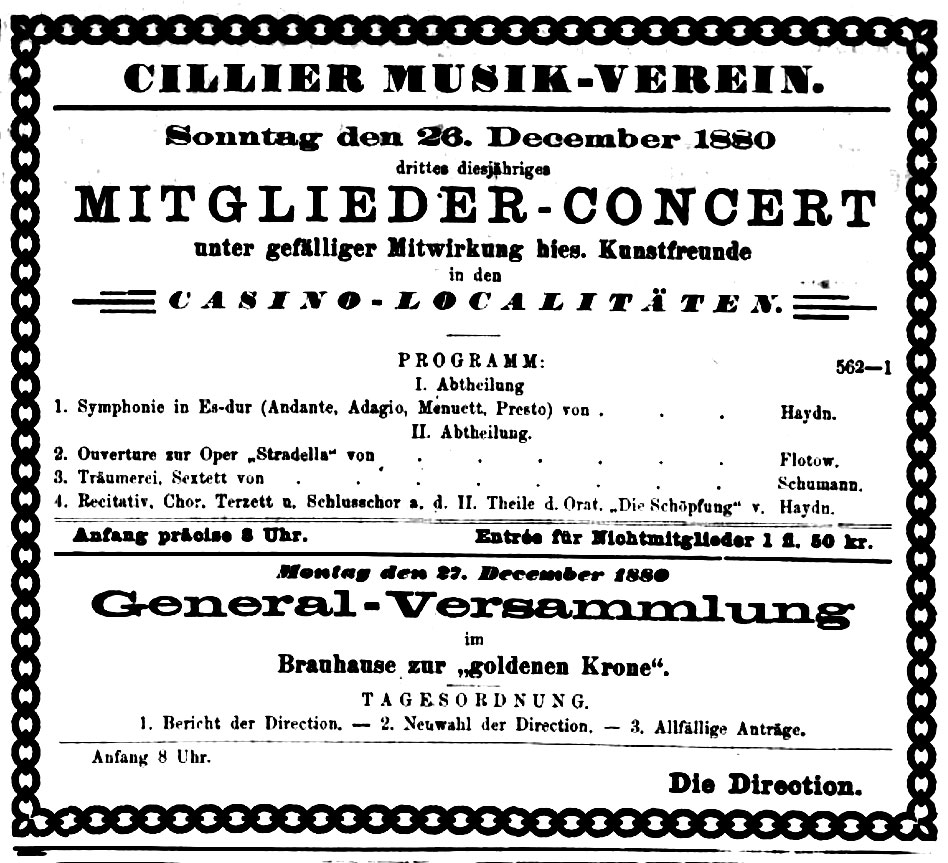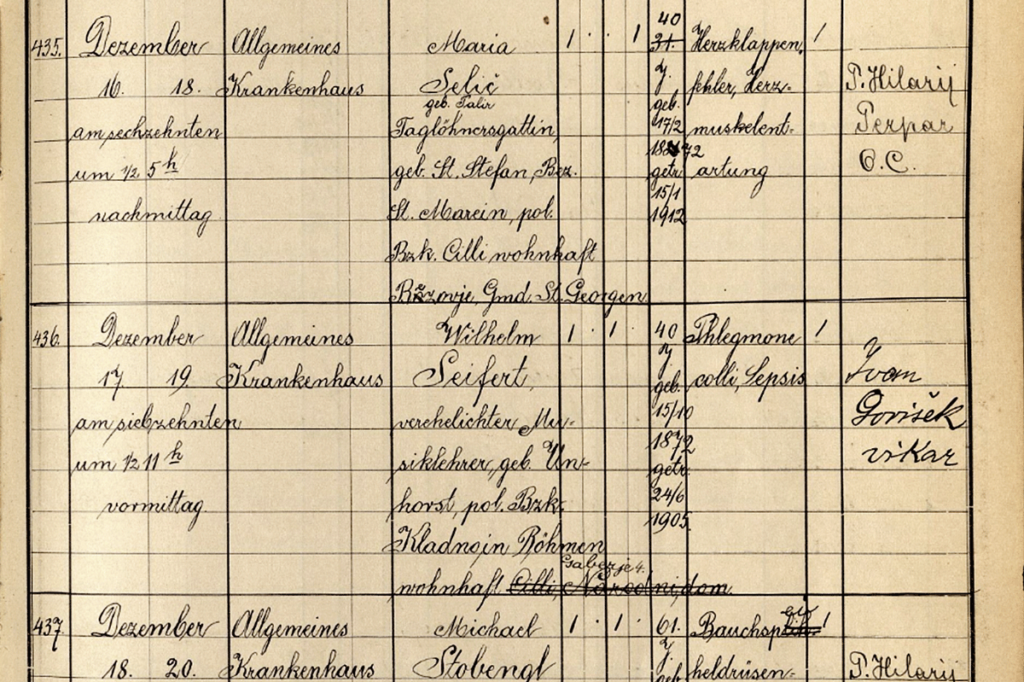VIRTUAL EXHIBITION
Join us on a journey of discovery, explore the musical heritage and experience the interconnected cultural roots of Europe.
Immigrant Musicians
IV. MUSICAL LIFE IN CELJE
In addition to Germans and Slovenians, Italians and Czechs also lived in Celje in the nineteenth century. Until 1860 the music societies were ethnically mixed. The peaceful coexistence between Germans and Slovenians came to an end when Slovenians were also allowed to lead a social and political life. The first music society was founded in 1801 in Celje and remained active only until 1807. Some of its members participated in various theatrical performances, and later an amateur theater group led by Janez Jeretin (1803–1853) performed singspiels and operatic works. Occasionally, virtuoso violin pieces were performed in the Celje theater along with opera excerpts. The main school (Hauptschule) in Celje attracted musically well-trained teachers, including the violinist Joseph Leitermayer (1808–?) from Vienna, who moved to Celje in 1832. He was also active in the Lavant Music Society (Lavanter Musikverein), which was founded on the initiative of the school principal, Simon Rudmasch (1795–1858). In 1849, the teacher Franz Xaver Krainz founded a men’s quartet, which soon expanded into a twenty-member choir. Until 1857 they were called a choral society (Liedertafel), and from then on the Celje Men’s Choir (Männergesangverein von Cilli). The ensemble performed regularly at solemn church services and other occasions. Later, other societies were founded: the Casino Society (Kasino-Verein; 1856), the Reading Society (1863), the Celje Music Society (Cillier Musikverein; 1879) and the Wreath of Songs (Liederkranz; 1887). At the turn of the century, Slovenians made up only a third of the population of Celje, and thus could not play a prominent role in the development of German-language societies. It was the strong German hinterland that played an important role in various cultural undertakings in Celje and enabled the Celje Music Society to continuously give symphonic and chamber concerts, lay the foundation for music education with highly qualified foreign music teachers, and keep musical life in Celje at a relatively high level.
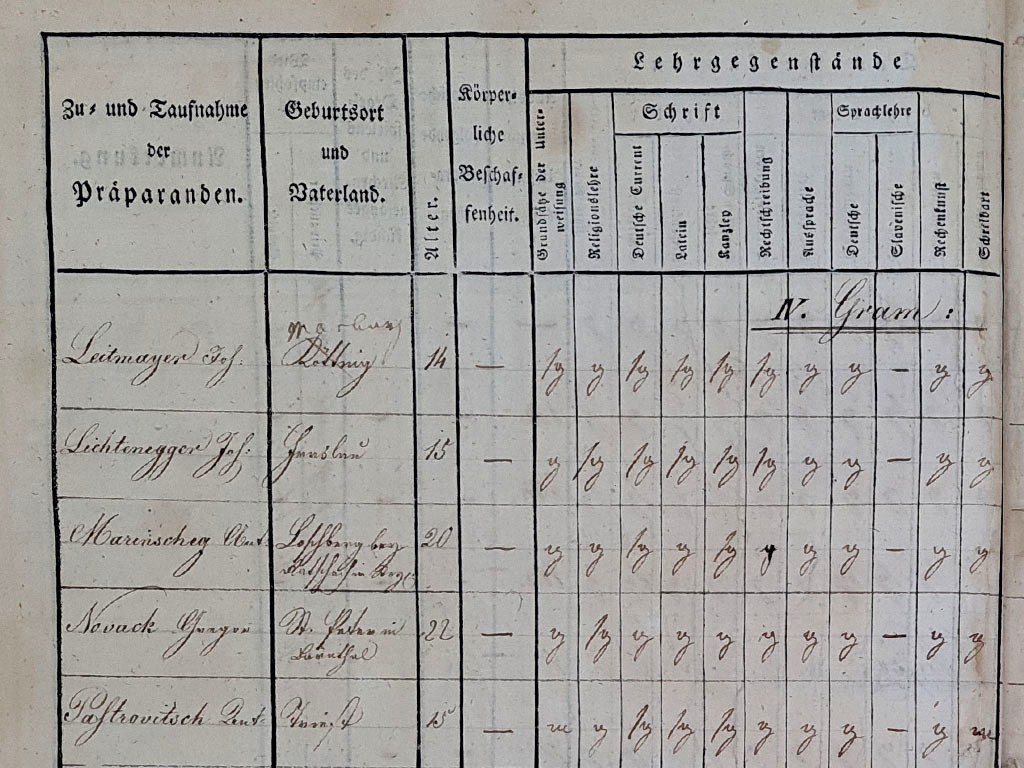
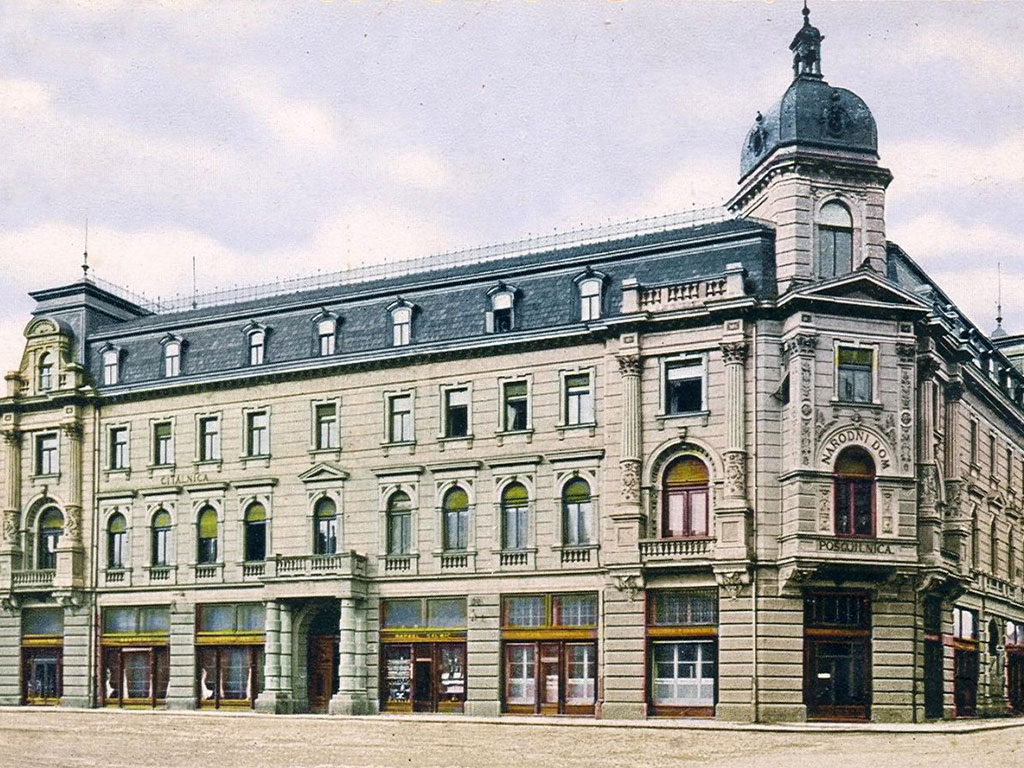
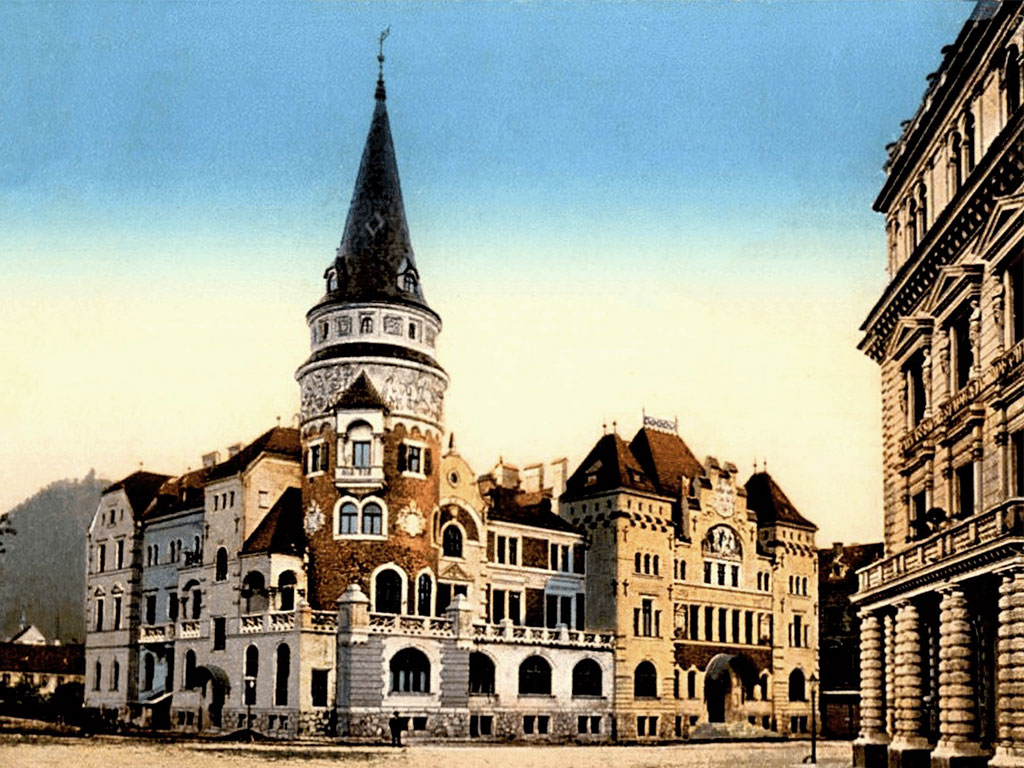
Establishment
CILLIER MUSIKVEREIN
The Celje Music Society (Cillier Musikverein) was founded in March 1879. Its main task was to establish an orchestra, train young musicians, and raise the general level of musical culture in Celje. The society wanted to hire Franz Czansky from Bohemia as music director. He arrived in Celje in mid-March, but later informed the society that he could not take the position because of his obligations to the regiment. At the end of March, an advertisement was placed seeking a new music director who would also be a teacher at the school and an organizer of member productions. Anton David, a former student of the Salzburg Mozarteum and leader of the municipal band in Vöcklabruck, was selected from thirty-two applicants. In 1882, he moved to Maribor, where he died the same year. The music school of the Celje Music Society started classes on 1 October 1879.
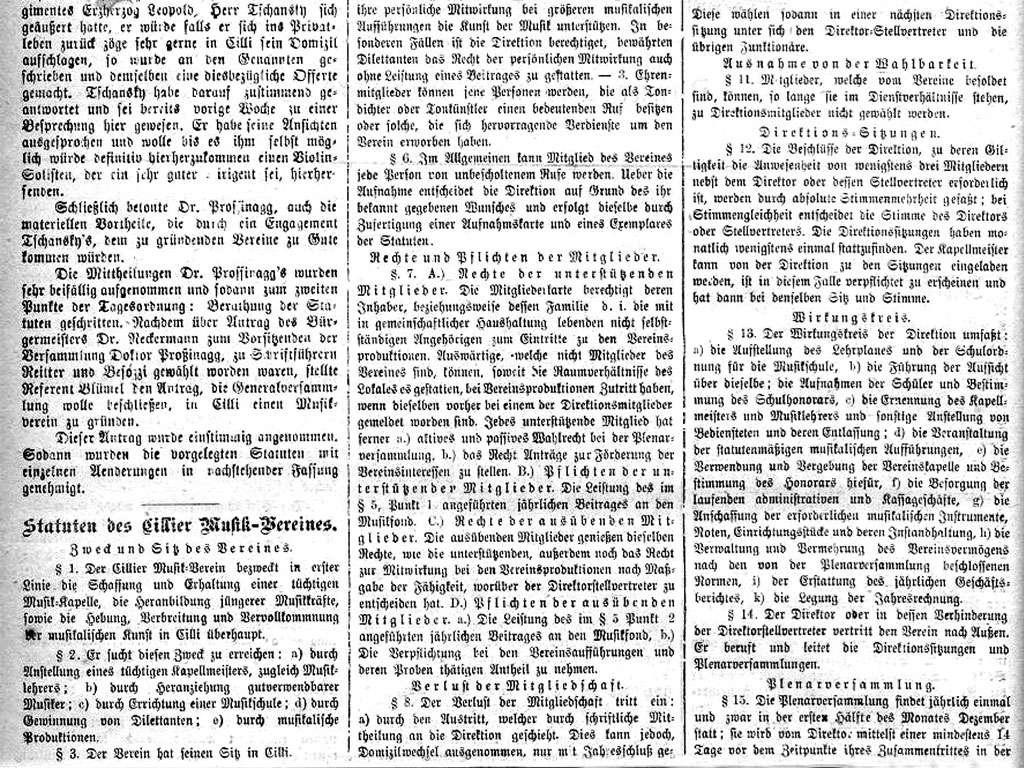
Musicians’ Origins
CILLIER MUSIKVEREIN
By the end of the First World War, more than forty foreign musicians worked in the Celje Music Society. The musicians came from Austrian, Czech, and German geographical areas. They received their music educations in Vienna, Graz, Salzburg, and Prague. Many musicians moved between the Styrian music societies in Celje, Graz, Maribor, and Ptuj. The most important musicians of the Celje Music Society were Anton David, Hans Ritter von Villefort, Georg Mayer (1841–?), Heinrich Weidt (1824–1901), Adolf Diessl (1867–1906), Moritz Schachenhofer (1878–1909), Karl Paul Seifert (1881–?), and Franz Strunz. Other musicians who lived in Celje and participated as composers in the Celje Music Society concerts included Carl Heinrich Eulenstein (1802–1890), Oskar Rieding (1846–1916), and Eduard Interberger (1868–1942).
The Origin of Musicians employed at the Cillier Musikverein
Concert Life
CILLIER MUSIKVEREIN
The orchestra performed for the first time on 17 August 1879, and the society’s first concert was held on 9 May 1880. Every year, the orchestra and the society gave one or more symphonic concerts with works ranging from classical to contemporary composers. Overtures to well-known operas were often performed, as well as solo pieces for violin. In larger symphonic performances, they were occasionally supported by amateurs and other musicians from Celje and the wider area, from as far away as Ptuj, Maribor, and Graz. The Celje Music Society gave about one hundred major concerts up to the beginning of the war. In 1890, the first chamber music evening was held, but it was not until 1908, when the Chamber Music Association (Kamermusikvereinigung) was founded, that chamber music performances began to flourish. In addition to famous works, the Celje Music Society also performed works by its own music directors: Anton David, Heinrich Weidt, Adolf Diessl, and Ludwig Schachenhofer.
Concerts organized by Cillier Musikverein
Music Teachers from abroad
CILLIER MUSIKVEREIN
Anton DAVID
Hans Ritter von VILLEFORT
Ferdinand FISCHER
Georg MAYER
Heinirch WEIDT
Adolf DIESSEL
Moritz SCHACHENHOFER
Karl Paul SEIFERT
Franz STRUNZ
Lovrenc KUBIŠTA
Branch in Celje
GLASBENA MATICA
This Music Society branch started its activities in Celje at the end of 1908, but was officially approved only in October 1909. The first director was Adolf Feix from Bohemia, who was succeeded in 1910 by the Prague violinist Wilhelm Seifert. Seifert died in 1912 and was succeeded by another Czech, Václav Engerer. With the outbreak of the First World War, musical development declined sharply, mainly due to the absence of many young musicians who had been mobilized and the lack of an underclass that could be trained in this situation. After the end of the war, the music situation also changed radically, because many important musicians who had once played significant roles in Celje musical life departed. After the war, one of the last musicians from Bohemia, Lovrenc Kubišta, taught at the school and led the city’s brass band. The 1920s were marked by the arrival of the Sancin brothers and the beginning of the dominance of local musicians in Celje.
Music Teachers from abroad

